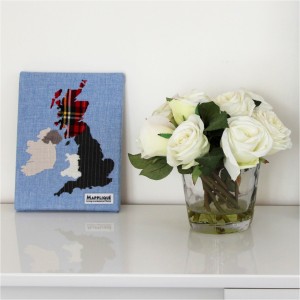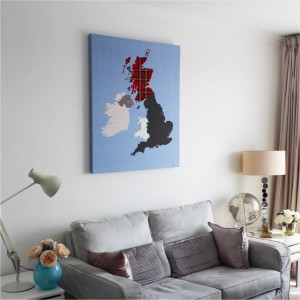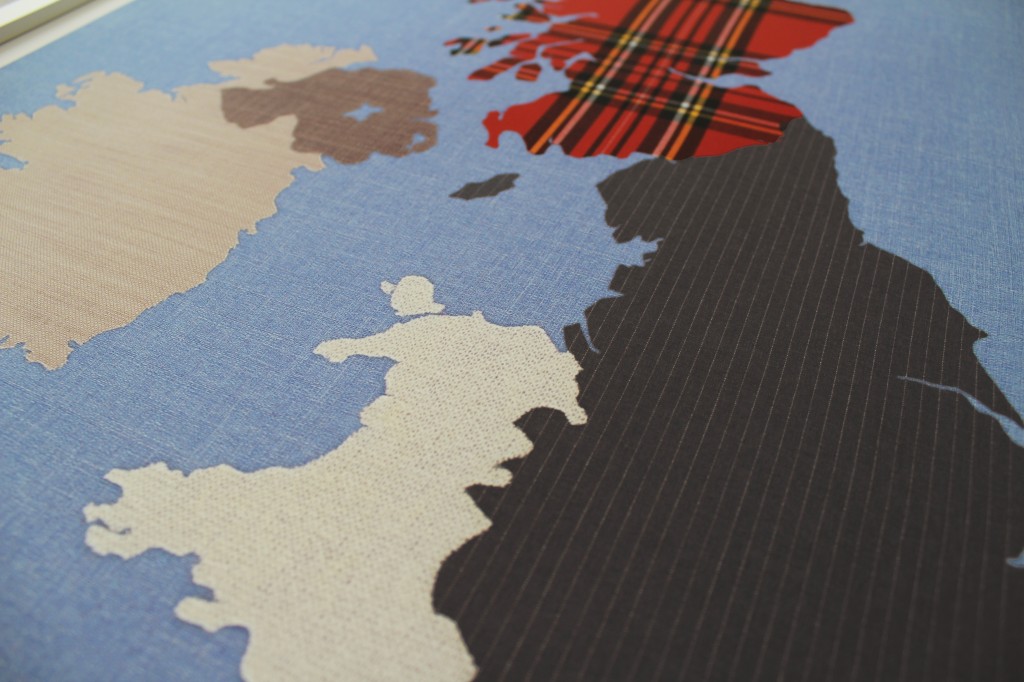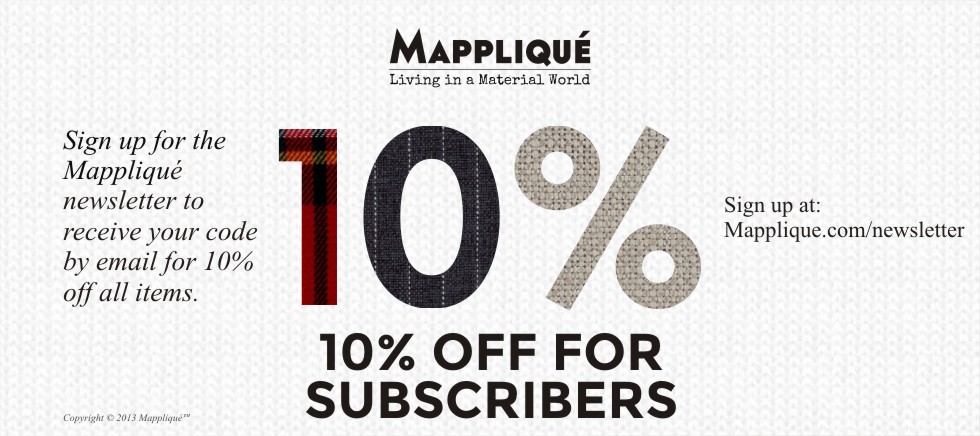Irish Linen
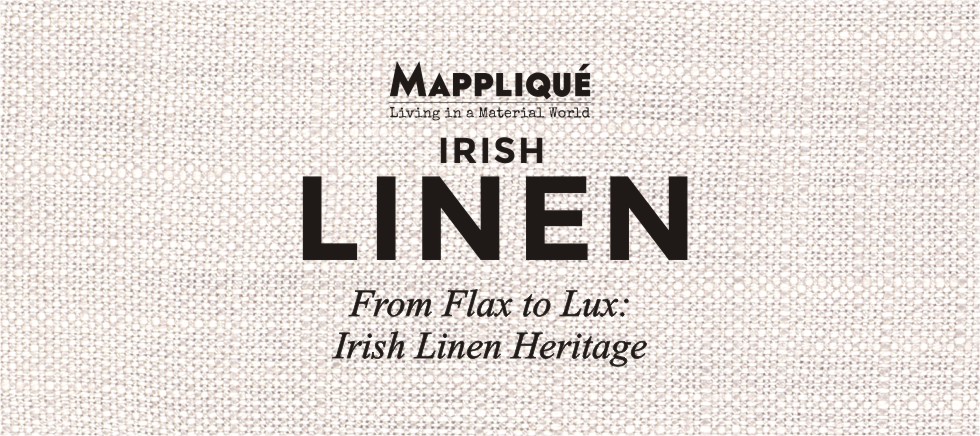
The first fabric that naturally comes to mind when thinking of Ireland is linen, and rightly so, as there’s a long and prestigious heritage of linen production that, despite no longer mass-produced, persists to this day to create luxurious textiles.
Linen is one of the oldest textiles known to man. After animal furs, linen has been traced back thousands of years to Ancient Egypt and is widely considered the first woven fabric.
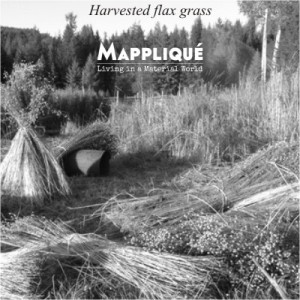 There was a home-spun culture of domestic fabric-making, dating back to the 8th Century, but linen was a time-consuming by-product of growing flax as a food source, so was generally reserved for landowners & dignitaries to wear or use in their homes.
There was a home-spun culture of domestic fabric-making, dating back to the 8th Century, but linen was a time-consuming by-product of growing flax as a food source, so was generally reserved for landowners & dignitaries to wear or use in their homes.
Irish linen as we know it today truly began in 1685 when over 5,000 French refugees, most of whom were spinners and weavers of flax, settled in Ireland. This suited the English who were concerned that the Irish woollen industry was proving too competitive and wanted to actively promote linen production instead.
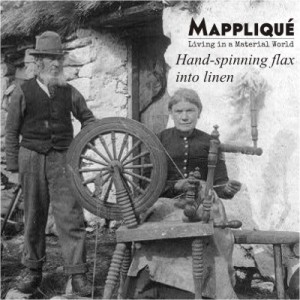 With a Royal Warrant granted for Irish linen and a trade body established in the late 17th Century, Irish linen was set to become world-famous for many years to come.
With a Royal Warrant granted for Irish linen and a trade body established in the late 17th Century, Irish linen was set to become world-famous for many years to come.
The advent of cotton and cheaper, man-made fabrics saw linens popularity fall (despite a resurgence during the Second World War when Irish Linen was accessible to mainland Britain), but Irish Linen is still considered an authentic, luxury fabric revered for its quality.
Whilst Ireland used to be covered with fields of flax, the grass from which linen is spun, Irish Linen today means fabric that has been spun and woven, or knitted, in Ireland from 100% flax fibres (regardless of where the flax has been cultivated).
Irish spinners and weavers are widely regarded as some of the best in the world and it is this reputation that perpetuates Irish linen as a desirable fabric. From fancy jacquard damasks to hardwearing plains, spinning and weaving skills have been passed down through the centuries, from generation to generation, to preserve what has become a luxury product, in fashion and homewares.
BRITISH ISLES
Choosing linen as the textile to represent Ireland in the fabric map of the British Isles was obvious. Whilst Irish linen is produced across the whole of the island, North & South, we have selected a different linen-style fabric for Northern Ireland that combines the natural beige of Ireland with the grey of England to reflect its part in the United Kingdom.
Tartan
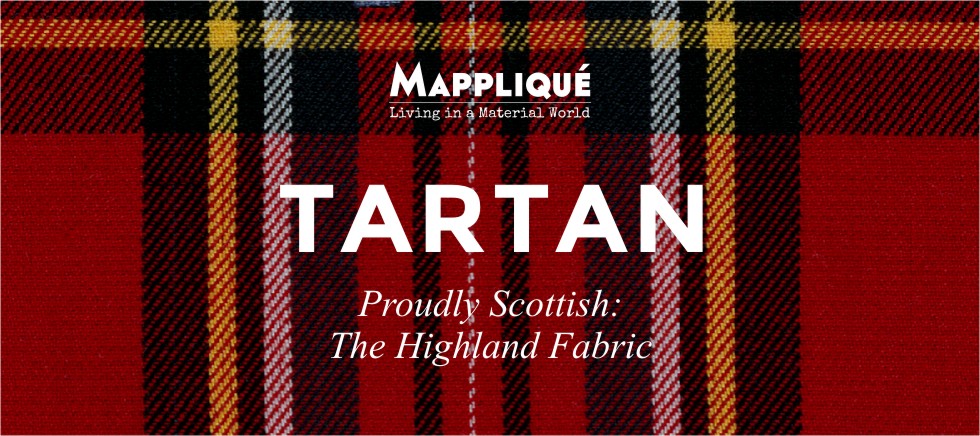
There can’t be a fabric more closely bonded to its cultural identity or geographical location than Tartan; proudly Scottish and world-renowned.
Tartan endures as a stylish fabric in fashion and home interiors yet is a textile conundrum: the fabric manages to be comforting & familiar whilst simultaneously subversive and free-spirited. From club rooms & country retreats to punk & grunge, the symbolism of the famous weave is multi-layered.
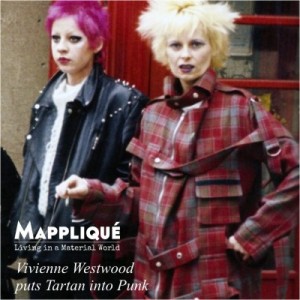 From William Wallace leading the fight for freedom to the prolonged Jacobite campaign against English sovereignty, Scotland has established a long-standing reputation for independent and impassioned thought and action. In fact, tartan wearers were regarded as so insubordinate that the fabric was banned from 1747 until 1782, but its prohibition only added to its edgy danger. Perhaps it is this rebelliousness that inspired Malcolm McLaren and Vivienne Westwood to create tartan bondage trousers for the punk scene in the ’70s, mods and skinheads to don tartan-lined harrington jackets, and grunge kids to wear tartan shirts and skirts in the early ’90s.
From William Wallace leading the fight for freedom to the prolonged Jacobite campaign against English sovereignty, Scotland has established a long-standing reputation for independent and impassioned thought and action. In fact, tartan wearers were regarded as so insubordinate that the fabric was banned from 1747 until 1782, but its prohibition only added to its edgy danger. Perhaps it is this rebelliousness that inspired Malcolm McLaren and Vivienne Westwood to create tartan bondage trousers for the punk scene in the ’70s, mods and skinheads to don tartan-lined harrington jackets, and grunge kids to wear tartan shirts and skirts in the early ’90s.
Yet Tartan has an alternative side that speaks of comfort, heritage, ancestry and home, with millions of Scottish descendants across the globe still identifying themselves with, and wearing, the tartan fabric of their clan or family name. Whether it’s tracing a tartan fabric back to a clan or a location (and there are between 3,500 to over 7,000 different variations of tartan depending on which official body you consult), descendants feel a sense of family, belonging, and comfort.
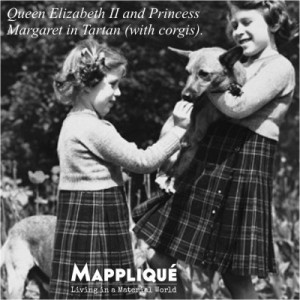 The traditions of royalty and the military have confirmed tartan as an official establishment fabric. Bagpipe-playing soldiers at Scottish castles are bedecked in their historic military tartans and continue to transfix tourists. Incidentally, tartan is often called plaid but the plaid is the piece of fabric worn over the shoulder.
The traditions of royalty and the military have confirmed tartan as an official establishment fabric. Bagpipe-playing soldiers at Scottish castles are bedecked in their historic military tartans and continue to transfix tourists. Incidentally, tartan is often called plaid but the plaid is the piece of fabric worn over the shoulder.
It’s the two Queens, Victoria and Elizabeth II, that bestowed tartan as the leisure fabric for the aristocratic class, having adopted it as their “off-duty” wear in the Royal holiday home of Balmoral. Whilst we may not all have our own Highland retreats to visit during the summer, tartan textiles and wallpaper feature heavily in public & private interiors looking to capture a countryside comfort.
The tartan kilt itself feeds the contradictory nature of the fabric; what could be regarded as feminine to some is made ultra-masculine purely because of its rebellious history and strength of national character (would you tell a caber-tossing Scotsman his kilt was a skirt?). The tartan kilt endures as a symbol of Scottishness the world over.
Strong yet comforting, rebellious but establishment; Tartan means something different to everyone and persists because of this. It’s a chameleon textile that freely adapts to the occasion or environment and rightly claims its place as one of the most famous fabrics in the world.
BRITISH ISLES
Choosing a textile to represent Scotland in the fabric map of the British Isles was incredibly simple as there really was only one choice: Tartan. The original fabric maps are bespoke and offer a choice between two world-famous tartans, Royal Stewart and Black Watch, or another tartan of choice that reflects the family background or interior in which the piece is to be displayed.
For the reproduction giclée prints, Royal Stewart has been selected as the worlds most recognisable tartan.
Pinstripe
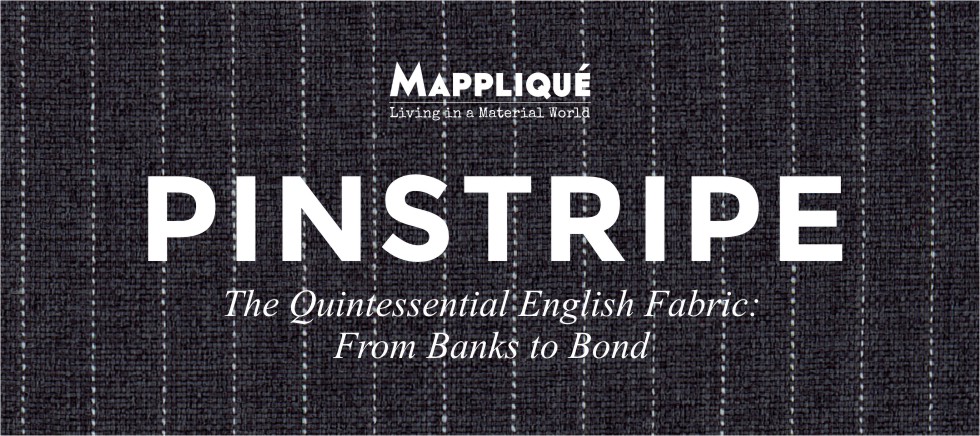
The specific origin of pinstriped fabric becoming the ubiquitous uniform of office workers is disputed but it’s indubitably British, or rather English to be exact.
Some believe that the striped trousers of military regalia were repurposed to become part of the uniform for city and bank workers (with each bank having it’s own identifiable stripe) whereas others uphold pinstripe’s sporting background, having been adapted from outfits for attending boating events, cheering rowers along from the river banks.
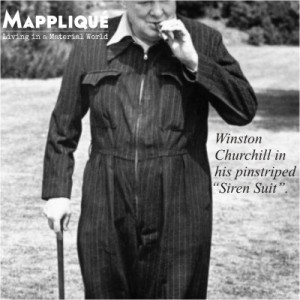 Regardless of it’s military or sporting origin, pinstripe suits quickly became the outfit of bank clerks and came to define respectability, reliability and trust. Ironically, the gangsters of Chicago probably adopted the stripe suit for this very reason, to cover their nefarious activities, but got it wrong by making their suits too flashy, widening and thickening the pinstripe to a brash chalk stripe.
Regardless of it’s military or sporting origin, pinstripe suits quickly became the outfit of bank clerks and came to define respectability, reliability and trust. Ironically, the gangsters of Chicago probably adopted the stripe suit for this very reason, to cover their nefarious activities, but got it wrong by making their suits too flashy, widening and thickening the pinstripe to a brash chalk stripe.
Winston Churchill, one of the most globally recognisable English Prime Ministers, was often pictured in one of his grey pinstripe suits, and he even commissioned his tailor to make a “siren” suit, which was essentially a pinstripe boiler suit he wore when staying up all night during air raids.
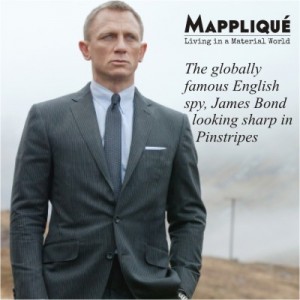 Monty Python and John Steed of the Avengers become successful British exports and defined Englishness during the 1960s to maintain the standing of the pinstripe suit.
Monty Python and John Steed of the Avengers become successful British exports and defined Englishness during the 1960s to maintain the standing of the pinstripe suit.
During the intervening years, a subtle grey pinstripe suit has been the default uniform for office workers who don’t want to stick to plain and dull black suiting, or be mistaken for a sommelier in a restaurant.
Despite bankers losing their trustworthy image in recent years, due to sub-prime activities that brought about a global financial crisis unchecked by government regulation, the pinstripe suit has survived and still perpetuates it’s Englishness and trustworthiness globally, as stylishly demonstrated by the longest-serving movie spy James Bond in Skyfall.
Pinstripe endures as a stylish, English fabric renowned the world over and long may it continue.
BRITISH ISLES
When it came time to choose a textile to represent England in the fabric map of the British Isles, the natural choice was a grey pinstripe fabric. The fabric features on the original fabric maps as well as on the reproduction giclée prints.
NEW: Giclée Prints of the British Isles Fabric Map Wall Art
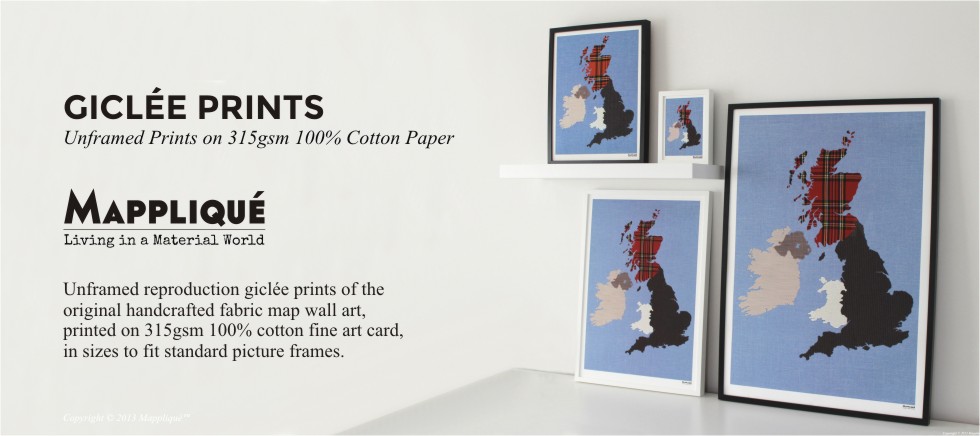
NEW: Giclée Prints of the British Isles Fabric Map Wall Art
 Mappliqué – Mapplique.com
Mappliqué – Mapplique.com
